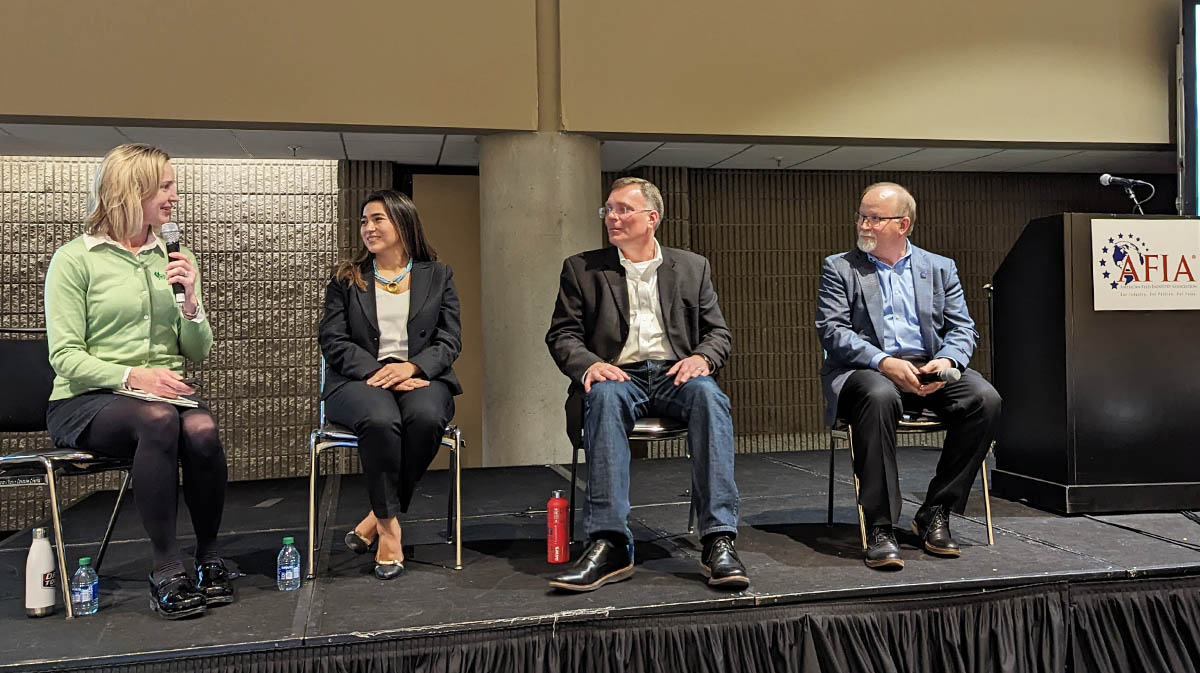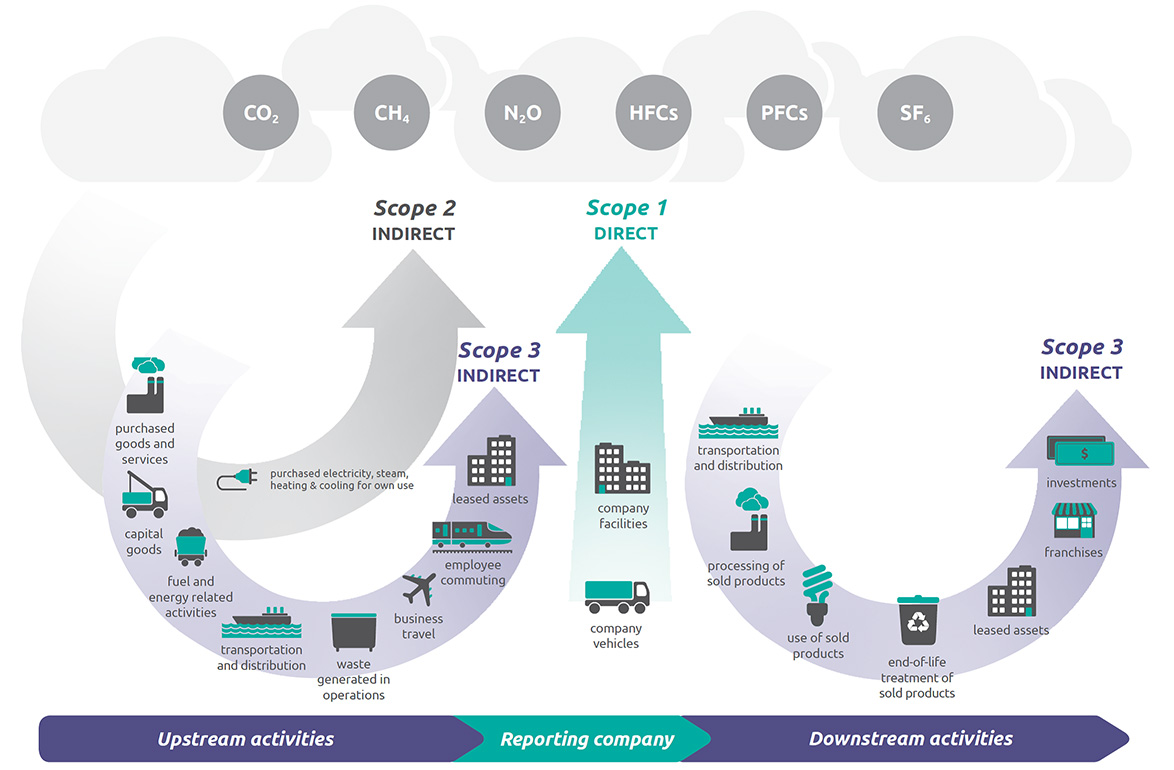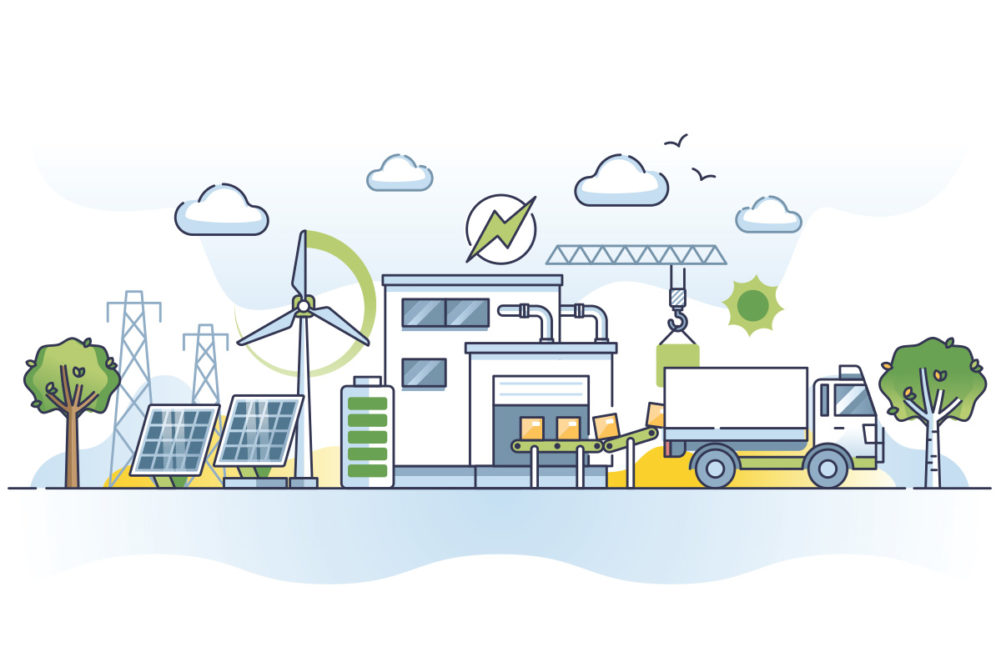This is the first of three articles covering a sustainability panel from the 2023 Pet Food Conference. Get the full story — read the second article here, and the third article here.
ATLANTA — Sustainability means different things to different people, and these differences exist even among members of the animal food industry value chain. Finding a common ground on which to build more sustainable supply chains and distribution networks can be daunting and requires input and effort from across the value chain — but that’s certainly not stopping the industry from trying.
This spirit of collaborative problem solving was demonstrated in a panel presented during the American Feed Industry Association’s (AFIA) 2023 Pet Food Conference, held Jan. 24 in conjunction with International Production & Processing Expo (IPPE) in Atlanta.
The panel, moderated by Lara Moody, executive director of the Institute for Feed Education and Research (IFEEDER), featured industry professionals from three corners of the industry — one consultant, one manufacturer and one supplier — who discussed their various strategies and insights for mitigating Scope 3 emissions. Panelists included Temis Coral, senior sustainability consultant at John Beath Environmental, LLC, Nicholas Rozzi, Ph.D., worldwide director of development at Hill’s Pet Nutrition, and Terry Ward, Ph.D., global director of strategy and sustainability at Zinpro Corporation.
 From left: Lara Moody, Temis Coral, Nicholas Rozzi, Ph.D., and Terry Ward, Ph.D. (Source: ©Jordan Tyler – Sosland Publishing Co.)
From left: Lara Moody, Temis Coral, Nicholas Rozzi, Ph.D., and Terry Ward, Ph.D. (Source: ©Jordan Tyler – Sosland Publishing Co.)
John Beath Environmental, Beaumont, Texas, is a consultancy firm for environmental compliance and corporate sustainability. According to Coral, the company helps its clients understand what sustainability is, how to make a business case for sustainability in order to gain internal engagement, and supports companies who are “ahead of the game” and looking for ways to engage their entire value chain in their sustainability initiatives.
Hill’s Pet Nutrition, Topeka, Kan., is a global pet food business owned by Colgate-Palmolive. According to Rozzi, the company defines its sustainability efforts through three pillars: science-led nutrition, bringing people and pets together, and helping the planet for a new generation. Rozzi said he is directly involved in the third pillar, which involves assessing the company’s carbon and environmental footprint and “developing new opportunities, applications and formulations as ways to create products that are more sustainable for carbon footprint, water usage [and] land usage,” he said.
Zinpro Corporation, Eden Prairie, Maine, is a privately held, family-owned company with a global footprint in more than 70 countries. The company has provided trace mineral ingredients to the livestock feed and pet nutrition industries for more than 50 years. Sustainability is built into the company’s mission and remains a part of its vision for the future, Ward said.
“I would argue that, in animal agriculture, we’ve been doing sustainability for thousands of years,” he added. “At the same time, we’ve got work to do.”
Taking a broad scope
The Environmental Protection Agency (EPA) has laid common groundwork to help companies classify, define and measure their carbon footprint based on emissions in three categories — or Scopes — that account for both direct and indirect impacts.
The EPA defines Scope 1 emissions as “direct greenhouse (GHG) emissions that occur from sources that are controlled or owned by an organization (e.g., emissions associated with fuel combustion in boilers, furnaces, vehicles).” Scope 2 emissions are defined by the EPA as “indirect GHG emissions associated with the purchase of electricity, steam, heat or cooling.”
Scope 3 encompasses a much broader perspective. This Scope includes emissions that are “the result of activities from assets not owned or controlled by the reporting organization, but that the organization indirectly affects in its value chain,” according to the EPA. Scope 3 emissions should include all emissions that fall outside of an organization’s defined boundaries for Scope 1 and 2, such as purchased goods and services, fuel and energy-related activities, transportation and distribution, waste generated by operations, business travel and employee commuting, capital goods, and even leased assets.
The EPA recognizes that Scope 3 emissions typically account for the vast majority of an organization’s total GHG emission. This is where the situation gets hairy — what one company may consider as their Scope 1 emissions could be considered Scope 3 by their clients, customers, suppliers or partners. If Scope 3 is all about the value chain, it’s crucial for organizations to understand how their emissions may impact, or be impacted by, others along that chain.
 Source: Environmental Protection Agency, Greenhouse Gas Protocol, “Corporate Value Chain (Scope 3) Accounting and Reporting Standard,” Page 5
Source: Environmental Protection Agency, Greenhouse Gas Protocol, “Corporate Value Chain (Scope 3) Accounting and Reporting Standard,” Page 5 “Scope 3 emissions are so important because [they are] so difficult to manage,” Coral said. “When you take a big picture [approach] to how sectors are distributing their emissions in the total corporate footprint, we can see that, for most of the sectors, Scope 3 is a key component, especially agricultural commodities for consumer foods and services.
“That hotspot where you have the highest emissions is going to be in your value chain, and this is super important because you need to start creating engagement strategies to reduce those emissions, even if they aren’t directly under your control,” she added.
Therefore, reducing Scope 3 emissions necessitates a collaborative approach involving all manner of stakeholders.
What is driving sustainability?
In her opening remarks for the panel, Moody noted there are countless definitions for sustainability today, and one organization should not be responsible for defining sustainability for the entire US animal food industry. For this reason, IFEEDER’s definition puts the onus on industry members to decide for themselves.
“Sustainability is defined and managed by each individual organization to deliver measurable, continuous improvement on the impacts related to people, planet and governance,” she said. “…Essentially we’re saying to consider what issues are important to you — relative to people, planet and governance — and figure out what your goals or targets are, how you’re going to measure them, and then make continuous improvements toward them.”
Through its own research, IFEEDER has identified common drivers of sustainability, as well as challenges, voiced among animal food industry members. One of these drivers comes from a regulatory perspective.
“You have consumers, you have shareholders and, finally, what we are seeing for many of our clients are the regulation requirements around disclosure of your climate measurements,” Coral said. “…The SEC [US Securities and Exchange Commission] is going to start requiring you to disclose your Scope 1 and 2 [targets] and, if you have Scope 3 targets, to disclose those as well.
“Europe is really stringent with the regulations that they have right now,” she added. “…You need to measure and start showing that you’re making promises [on] sustainability in order to be able to stay in those markets. That regulatory part is becoming more and more important for all companies.”
Other drivers include consumer demand and transparency, having quality data to back up marketing claims and differentiate products, as well as market access and market excellence for companies looking to distribute internationally.
For Hill’s Pet Nutrition, Rozzi noted he sees sustainability being driven by end-consumer demand for recyclable packaging and carbon footprint accountability. On the other hand, ingredient suppliers like Zinpro Corporation must walk the tightrope of demands from several categories of stakeholders.
“As a privately held company, our investors are our shareholders for the most part, and they respond to our customers, and our customers ultimately respond to the consumer,” Ward said. “The value chain… links us all together inevitably. That’s just the nature of it. In the end, it becomes the consumer [driving sustainability in the pet food space], but for us, it would be customers, specifically those that are in the publicly traded space.”
It’s not surprising that one of the main challenges for companies is how to align climate action across the value chain. Some companies do not know where to start, and providing resources is a key area of focus for industry organizations and associations moving forward. Another challenge is the interoperability of data, or the ability to use and share data electronically within and across organizations.
Finally, companies have expressed a need for better understanding the “business case” for sustainability efforts, so that they can begin to garner internal and external engagement in their efforts.
Sustainability toolkit
After 18 months of research and development, IFEEDER recently launched an Animal Food Industry Sustainability Toolkit on Jan. 24 to address some of these challenges. The toolkit provides an “on-ramp” for animal food industry members who are ready and willing to support broader sustainability goals. The toolkit materials are grouped into three stages — crawl, walk and run — to support companies at each stage of their sustainability journey.
“Zinpro is in all three of those in various aspects,” Ward noted. “In some cases we’re crawling, in some cases we may be walking, and in other cases we might [be ready] to break into a trot. It’s a journey for us.”
There are more than 20 resources inside the toolkit, including a material assessment how-to, a scientific literature review detailing historical environmental efforts by the feed community, message mapping to help members communicate their sustainability stories, and much more. The toolkit is free to members of AFIA and IFEEDER donors.
This is the first of three articles covering a sustainability panel from the 2023 Pet Food Conference. Get the full story — read the second article here, and the third article here.
Read more about the 2023 Pet Food Conference and other trending topics in the pet food industry.



